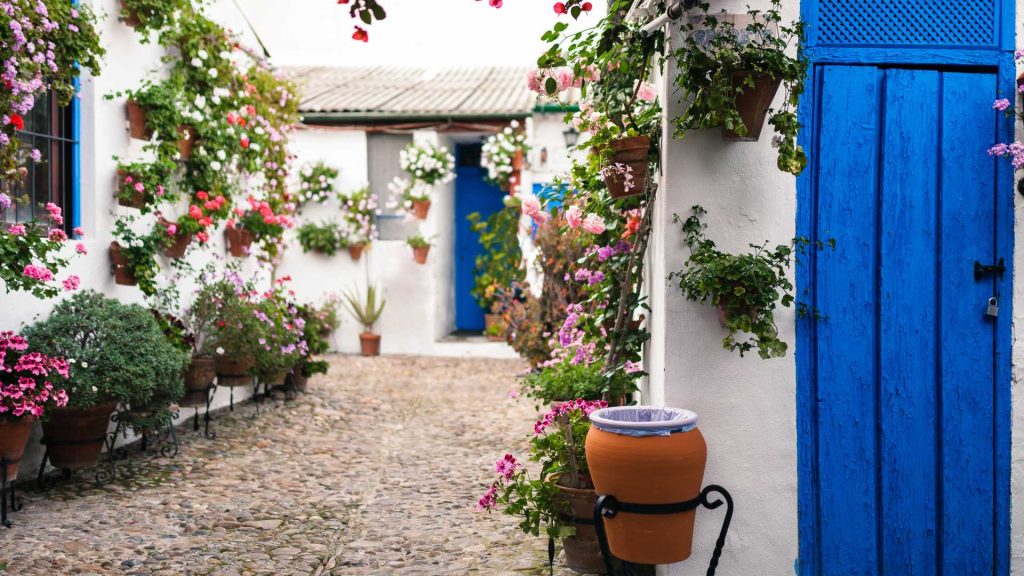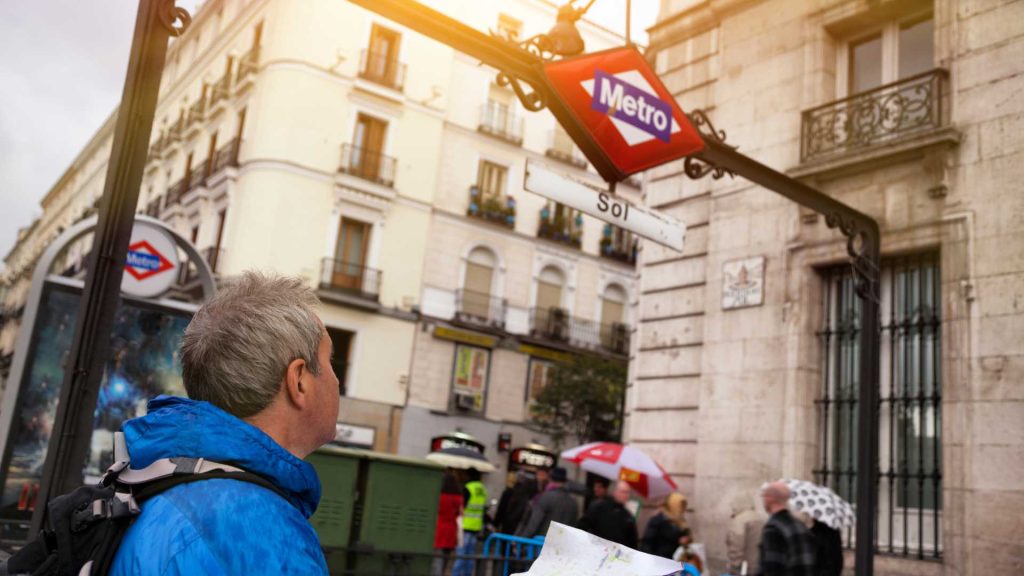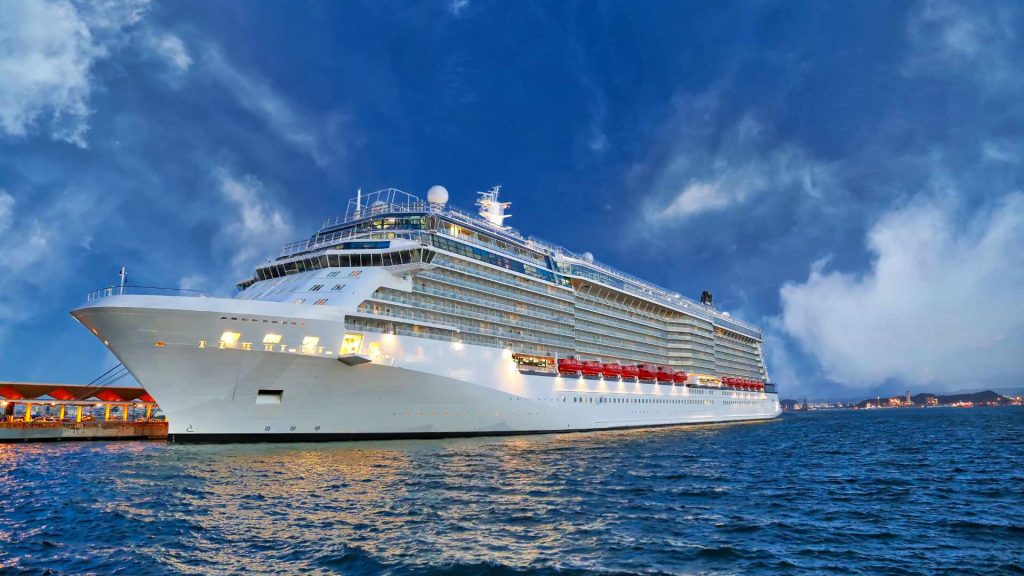Spain is a country that transforms with the seasons, offering something magical whether you visit in spring or in winter. The beauty of choosing Spain as your destination is that there’s truly no wrong time to go, but the experiences may differ though.
Your ideal travel time depends on what speaks to you most. Is it about vibrant festivals and warm summer nights? Perhaps you prefer the gentle temperatures and fewer crowds? Or maybe you’re looking for that perfect balance of culture, comfort, and favorable weather.
Let’s explore what each season brings to Spain, so you can choose the timing that matches your travel dreams.
Spring (March to May)

Spring delivers Spain’s most rewarding travel experience for those who appreciate culture, comfortable walking weather, and authentic local life. Temperatures range from 55°F in March to 75°F by May (15-25C), with minimal rainfall and a lot of sunshine.
The weather consistency is remarkable. Pack layers: lightweight pants, comfortable walking shoes with good support, a light jacket for evenings, and a sun hat for afternoon exploration.
Semana Santa (Holy Week, usually late March or early April) transforms cities like Seville and Granada into true cultural experiences. The processions begin around 6 PM and continue past midnight, so comfortable shoes are essential. Many restaurants stay open later during this week, accommodating visitors who want dinner after watching the evening processions.
Las Fallas in Valencia (March 15-19) offers controlled excitement with massive artistic sculptures and nightly fireworks. The festival is extremely crowded, but organized tours can help you navigate the best viewing spots.
Spring hiking in northern Spain is exceptional, with wildflowers blooming and temperatures rarely exceeding 70°F (20°F). The Camino de Santiago sees its most pleasant walking weather, though book accommodations well ahead as this is peak pilgrim season. Even if you’re not walking the entire route, day sections offer rewarding experiences without major physical demands.
Best regions for spring: Andalusia becomes comfortable again after winter, with Seville reaching perfect 70-75°F (20-23C) days and minimal crowds before Easter week. Valencia combines cultural festivals with coastal breezes that keep temperatures moderate. Northern Spain, including Bilbao and San Sebastián, emerges from winter with spectacular green landscapes and excellent cuisine.
Insider tip: Spanish restaurants often have limited menus during Semana Santa week, and many close on Good Friday. Plan accordingly and make reservations early for the restaurants that remain open.
Summer (June to August)

Summer in Spain requires honest conversation about heat tolerance. Inland cities like Madrid regularly exceed 95°F (35C), with Seville often reaching 105°F (40C). However, coastal regions offer spectacular experiences with sea breezes keeping temperatures in the comfortable 75-85°F (25-30C) range.
If you’re visiting inland cities in summer, embrace the Spanish schedule completely. Start sightseeing by 8 AM, enjoy a substantial lunch around 2 PM, rest during the 3-7 PM heat peak, then begin evening activities around 8 PM when temperatures drop. Many museums offer extended evening hours in summer specifically for this reason.
What to pack for summer: Lightweight, breathable fabrics in light colors, a wide-brimmed hat, high-SPF sunscreen, comfortable sandals for evening strolls, and a light sweater for air-conditioned spaces. Avoid synthetic fabrics that trap heat.
La Tomatina (last Wednesday in August) in Buñol is exactly as messy as it sounds, but incredibly fun if you’re up for it. Wear clothes you can throw away afterward and bring waterproof bags for your belongings. The town provides safety guidelines, and the event is well-organized despite appearing chaotic.
San Fermín in Pamplona (July 6-14) extends far beyond the famous bull run. The week-long festival includes concerts, traditional dances, and excellent Basque cuisine. Even if you skip the running (which most sensible people do), the cultural celebration is worth experiencing.
Coastal highlights: Costa del Sol maintains 80-85°F temperatures with cooling sea breezes and water warm enough for comfortable swimming (around 75°F). The Balearic Islands offer similar conditions with the added benefit of being islands. Beach clubs provide comfortable seating with shade, waiter service, and often pools in addition to beach access.
Peak season realities: Expect crowds at major attractions, especially in Barcelona and Madrid. Book restaurant reservations 2-3 days ahead, particularly for dinner. Hotel prices peak in July and August, but coastal locations often include breakfast and offer pools that provide relief from midday heat.
Fall (September to October)

Early fall combines summer’s warmth with spring’s comfort, creating ideal conditions for travelers who want the best of both worlds. September temperatures range from 21-27°C (70-80°F) with warm evenings perfect for outdoor dining, while October offers crisp 16-21°C (60-70°F) days ideal for walking and photography.
The post-summer crowd departure is dramatic. By September 15th, major attractions feel spacious again, restaurant reservations become easier, and locals return to their normal rhythms. This creates opportunities for more authentic interactions and better service.
La Mercè in Barcelona (around September 24th) showcases Catalan culture through human towers, traditional dances, and street concerts. Unlike tourist-focused summer festivals, this celebration feels authentically local while remaining welcoming to visitors. The weather is perfect for outdoor events, and the city’s restaurants offer special festival menus.
Fall brings harvest season throughout Spain’s wine regions. La Rioja offers organized harvest experiences where you can participate in grape picking, enjoy traditional harvest meals, and tour cellars with perfect wine-tasting weather. These experiences typically run from mid-September through early October.
Photography opportunities are exceptional during fall months. The light quality changes as the sun sits lower in the sky, creating that golden hour effect that lasts longer. Clear skies are common, and the reduced haze makes distant mountains and architectural details appear sharper.
What to pack for fall: Comfortable walking shoes with good support, lightweight layers including a warm jacket for evenings, a light rain jacket (October can see occasional showers), and camera equipment if you’re interested in photography. Temperatures can vary significantly between morning and afternoon.
Regional highlights: Madrid becomes walkable again with perfect café weather and outdoor market season. Barcelona offers beach weather through September with comfortable city exploration in October. Even Andalusia becomes pleasant for sightseeing, with Seville and Granada offering comfortable temperatures for their extensive outdoor attractions.
Winter (November to February)

While northern cities like Bilbao might see temperatures in the 40s with frequent rain, southern Andalusia often enjoys 60-65°F sunny days that feel like spring elsewhere. This season rewards travelers who choose their destinations strategically.
Museum season arrives in full force. The Prado in Madrid, Guggenheim in Bilbao, and Picasso Museum in Barcelona are infinitely more enjoyable without summer crowds. You can actually contemplate the art, take your time, and often enjoy special winter exhibitions. Many museums offer reduced admission prices during winter months.
Christmas in Spain offers authentic cultural experiences. Madrid’s Christmas lights rival any European capital, while Christmas markets in Barcelona provide excellent shopping without German prices. Spanish Christmas traditions extend through January 6th (Three Kings Day), offering an extended holiday atmosphere.
Carnival in Cádiz (February/March, depending on Easter dates) transforms this Atlantic coastal city into Spain’s answer to Rio. The celebration is entirely local-driven, with neighborhood groups spending months preparing costumes and performances. Hotels fill up, but the experience is authentic and energetic.
The Canary Islands become winter’s star destination. Tenerife and Gran Canaria maintain 18-21°C (65-70°F) temperatures with minimal rainfall. These islands offer hiking, beaches, water sports, and outdoor dining when mainland Europe is cold and grey. The flight from Madrid is only 2.5 hours, making island hopping practical.
What to pack for winter: Layer-friendly clothing since Spanish buildings often lack central heating. Include a warm jacket, comfortable walking shoes that can handle wet streets, an umbrella, and indoor layers since restaurants and museums can be cool. For the Canary Islands, pack as you would for spring elsewhere.
Budget advantages are significant. Flights, hotels, and even restaurant prices drop 30-40% outside of Christmas/New Year weeks. Many luxury hotels offer special winter packages, and you’ll often find rooms with views that cost double during peak season.
Quick Reference
Beach and Swimming Priority
- Best months: June through early September
- Water temperature: Warmest in August-September (24-26°C or 75-78°F)
- Consider: July-August bring crowds and higher prices
- Ideal for: Costa del Sol, Balearic Islands, Valencia coast
Cultural Immersion Focus
- Best months: April-May, September-October
- Why these months: Comfortable walking weather, local festivals, authentic atmosphere
- Avoid: Peak summer when locals flee cities
- Perfect for: Madrid, Barcelona, Seville, art museum tours
Budget-Conscious Travel
- Best months: November-February (except Dec 20-Jan 6)
- Savings potential: 30-40% on accommodation, 20% on flights
- Trade-offs: Shorter days, cooler weather, some seasonal closures
- Strategy: Focus on southern regions and Canary Islands
Festival and Events Enthusiasts
- Spring festivals: Semana Santa (March/April), Las Fallas (March)
- Summer celebrations: San Fermín (July), La Tomatina (August)
- Fall culture: La Mercè (September), wine harvests (Sept-Oct)
- Winter traditions: Christmas markets, Carnival (February)
Comfortable Weather Seekers
- Best months: April-June, September-October
- Temperature range: 18-24°C (65-75°F) with minimal rain
- Ideal for: Extensive walking, outdoor dining, photography
- Perfect activities: City tours, countryside visits, cultural sites
Active and Outdoor Adventures
- Hiking: April-June, September-October
- Cycling: March-May, September-November
- Water sports: June-September
- Golf: October-April (especially southern Spain)
Where to Go When
Madrid: Spain’s Cultural Heart
Best season: Spring (April-May) and Fall (September-October)
Spring in Madrid means 18-24°C (65-75°F) days perfect for exploring the city’s incredible parks. Retiro Park becomes an outdoor living room, while the nearby Botanical Garden showcases spring blooms. This is ideal weather for the Golden Triangle of art museums (Prado, Reina Sofia, Thyssen), with comfortable walking between locations.
Fall offers Madrid’s social season. Locals return from summer holidays, restaurants reopen with full menus, and cultural events resume. October temperatures in the high 60s make evening tapas tours comfortable and enjoyable.
Summer reality check: July-August temperatures often exceed 35°C (95°F). If you must visit in summer, plan indoor activities from 2-7 PM and embrace late-night dining (restaurants fill up around 10 PM). Many locals leave the city, so some neighborhood restaurants close for vacation.
Winter advantages: Excellent museum weather and authentic local life. Christmas lights along Gran Via rival any European capital. January-February offers the lowest hotel prices, though prepare for 4-10°C (40-50°F) temperatures and possible rain.
Barcelona
Peak perfection: September (La Mercè festival) and May-June
September combines warm beach weather (24-27°C / 75-80°F) with comfortable city exploration. La Mercè festival transforms the city into a street party, but unlike summer festivals, it feels authentically Catalan rather than tourist-focused. Beach weather continues through September, while city temperatures remain comfortable for walking.
Late spring (May-June) offers Barcelona at its most balanced. Beach weather begins, outdoor café culture flourishes, and major attractions are accessible without overwhelming crowds. Gaudí’s outdoor masterpieces like Park Güell are most enjoyable during these moderate temperature months.
Summer considerations: July-August brings intense crowds to major attractions. Book Sagrada Familia and Park Güell tickets well in advance. The coastal location moderates heat compared to inland cities, but expect peak-season pricing and crowded beaches.
Winter opportunity: December-February offers authentic Barcelona life. Museums are accessible, restaurants serve regular menus, and hotel prices drop significantly. While too cool for beach activities, the city’s covered markets and indoor attractions shine.
Seville and Andalusia
Ideal season: March-May, with early March being perfect
Seville in summer is genuinely challenging with temperatures regularly exceeding 38°C (100°F). However, spring in Andalusia is magical. March temperatures in the 18-21°C (65-70°F) range make exploring the Alcázar gardens, walking through Santa Cruz neighborhood, and visiting outdoor patios pure pleasure.
April brings Semana Santa celebrations, transforming Seville into an outdoor theater of devotion and artistry. The processions are deeply moving, and the weather is perfect for standing outside to watch. However, this is peak tourist season with corresponding prices.
Fall return: October makes Andalusia comfortable again. Temperatures drop to the 70s (20-24°C), making Granada’s Alhambra and Córdoba’s Mezquita enjoyable for extended visits. This is excellent timing for combining multiple Andalusian cities.
Winter mild season: December-February in southern Andalusia often feels like spring elsewhere, with sunny 15°C (60°F) days. While too cool for swimming, it’s perfect for cultural sightseeing without crowds.
Basque Country
Prime time: June-September
The Atlantic coast moderates summer temperatures, making the Basque region comfortable when the rest of Spain swelters. San Sebastián rarely exceeds 24°C (75°F) even in July, while offering world-class cuisine and beautiful beaches.
Summer brings the region’s famous pintxos (tapas) culture outdoors. Evening food crawls through San Sebastián’s old town are comfortable and social, while Bilbao’s riverside dining scene thrives. The Guggenheim Museum is less crowded in summer since many visitors head to coastal destinations.
Shoulder season advantages: May and October offer cooler temperatures ideal for hiking in the Pyrenees and visiting traditional villages. The cuisine remains exceptional, and hotel prices are more reasonable.
Winter reality: November-March brings frequent rain and temperatures in the 40s-50s (4-10°C). While the museums and restaurants remain excellent, outdoor activities become limited.
Canary Islands
Peak advantage: November-March
When mainland Spain experiences winter, the Canary Islands maintain spring-like conditions with temperatures consistently in the 18-21°C (65-70°F) range. This makes them ideal for travelers seeking warm-weather activities during traditional off-season months.
Tenerife offers diverse landscapes from beaches to volcanic hiking, while Gran Canaria provides excellent golf courses and water sports. The islands’ infrastructure caters well to mature travelers with good transportation and accessibility.
Summer considerations: June-August are actually less ideal due to higher temperatures and increased tourist crowds from mainland Europe. The shoulder seasons of April-May and September-October offer the best balance of weather and value.
Insider Tips for Comfortable Spain Travel
Restaurant timing matters more than you think. Lunch service typically runs 1:30-4 PM, dinner 8:30 PM-midnight. Arriving at 6 PM for dinner marks you immediately as a tourist and often means limited menu options.
Transportation comfort varies by season. Spanish buses and trains often lack adequate air conditioning by North American standards. During summer travel, book first-class train tickets when available, or travel early morning and evening when temperatures are cooler.
Siesta is practical! Many shops and smaller museums close 2-5 PM, especially outside major tourist areas. Plan morning cultural activities, afternoon rest, and evening exploration. This rhythm becomes essential during warmer months.
Walking distances are significant. Spanish cities prioritize pedestrian areas, which is wonderful but means more walking than typical North American travel. Historic centers often restrict vehicle access, so comfortable, supportive shoes are non-negotiable regardless of season.
Hotel standards differ. Air conditioning is less common and less powerful than North American standards. Even four-star hotels may have limited cooling capacity. Request rooms away from street-facing windows in summer, and always check air conditioning policies when booking.
FAQs
Which is the best month to visit Spain?
May and September consistently rank highest among experienced travelers. May offers spring beauty with warming weather, while September provides summer warmth with fall comfort and fewer crowds.
What month is the cheapest to go to Spain?
February (outside Carnival week) offers the lowest prices overall. November through early December also provide excellent value. Expect 30-40% savings on accommodation and 20% on flights compared to peak season. Southern Spain and the Canary Islands remain pleasant during these months.
When do most people vacation in Spain?
July and August see peak crowds, particularly from European tourists. Spanish domestic travel peaks in August when many businesses close for vacation. Easter week (Semana Santa) brings significant crowds to cultural destinations. Avoid these periods if you prefer smaller groups and authentic local experiences.
What are the best seasons in Spain?
Spring (April-May) and early fall (September-October) offer ideal conditions for most travelers: comfortable temperatures, manageable crowds, and full cultural calendars. Summer excels for beach destinations, while winter provides authentic experiences and budget advantages in southern regions.
Planning Your Perfect Spanish Adventure
Spain rewards travelers who match their timing with their priorities. The country’s diversity means that somewhere in Spain is always experiencing ideal conditions for some type of traveler.
For organized tour experiences, shoulder seasons provide the best balance of weather, cultural activities, and comfort. We at Wingbuddy design our Spain tour packages around these optimal windows, ensuring you experience Spain when it’s most rewarding while avoiding the extremes that can make travel stressful.
The key insight is that Spain operates on rhythms different from other European destinations. Embrace the later meal times, afternoon rest periods, and evening activity focus. It’s a practical adaptation that makes travel more comfortable and authentic.
Your Spanish adventure awaits, perfectly timed to match what matters most to you. Whether you’re drawn to cultural immersion, coastal relaxation, festival experiences, or authentic local life, understanding Spain’s seasonal rhythms ensures your trip will be everything you hoped for—comfortable, enriching, and unforgettably Spanish.
Ready to experience Spain at its finest? Explore our Spanish Discovery tour that showcases the country’s highlights during optimal travel seasons, designed specifically for travelers who appreciate both adventure and comfort.


